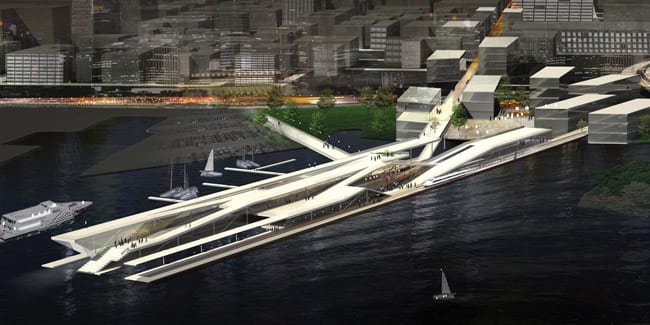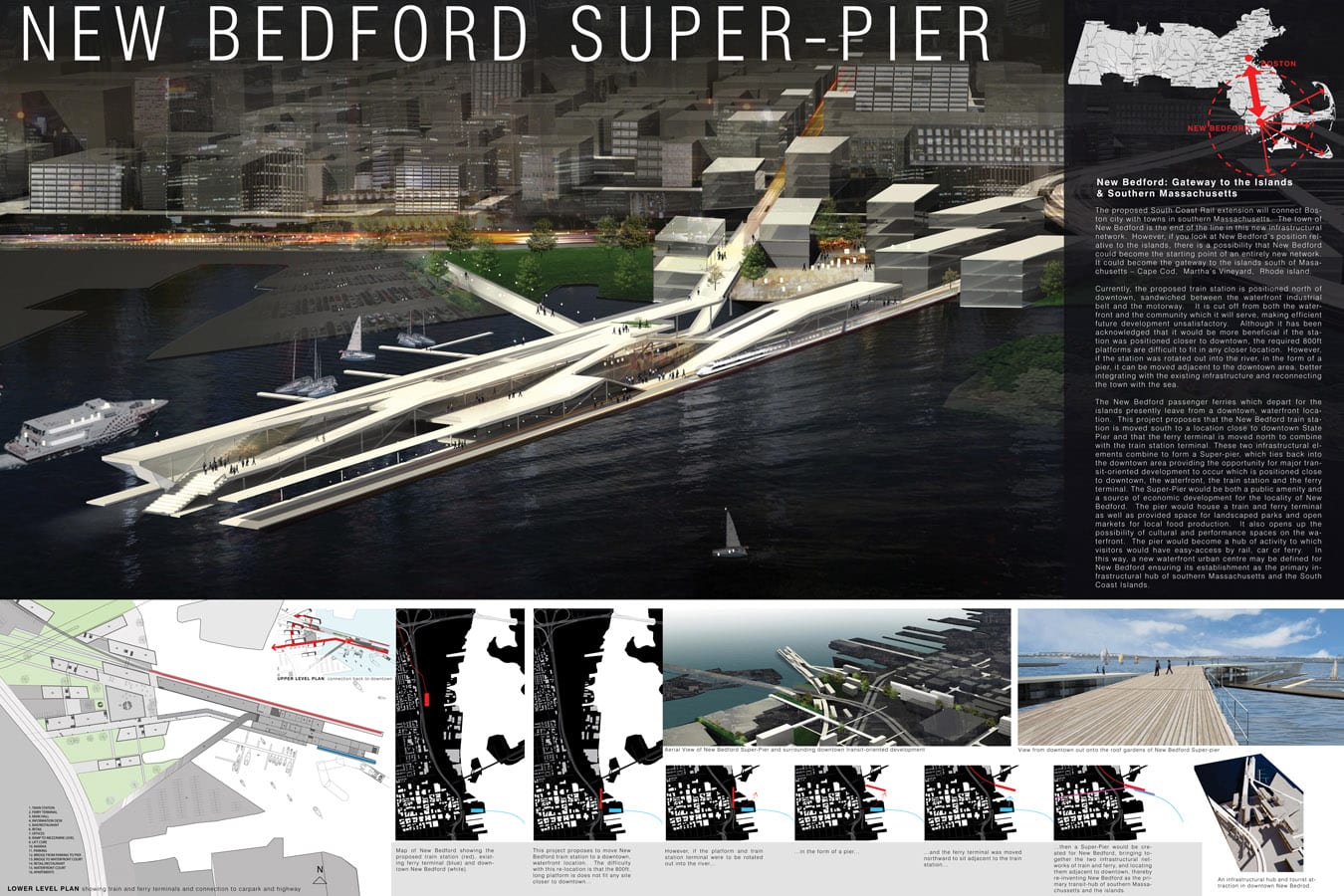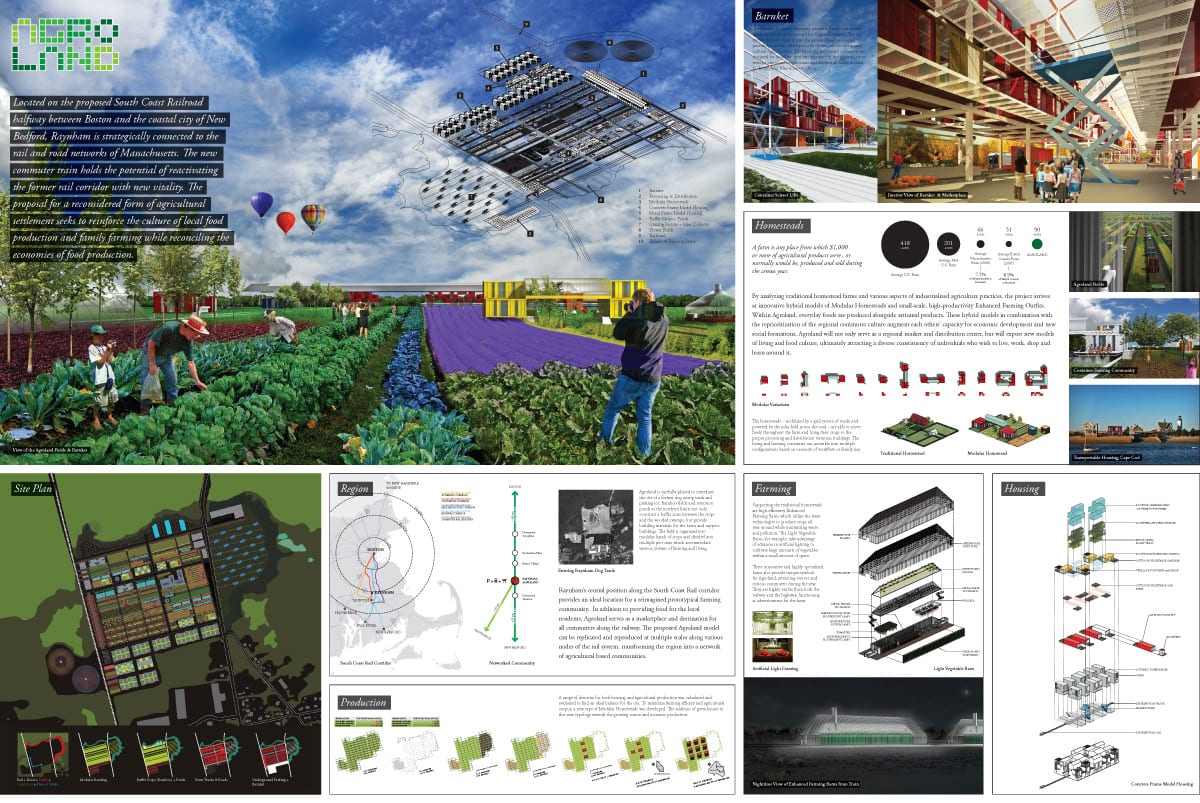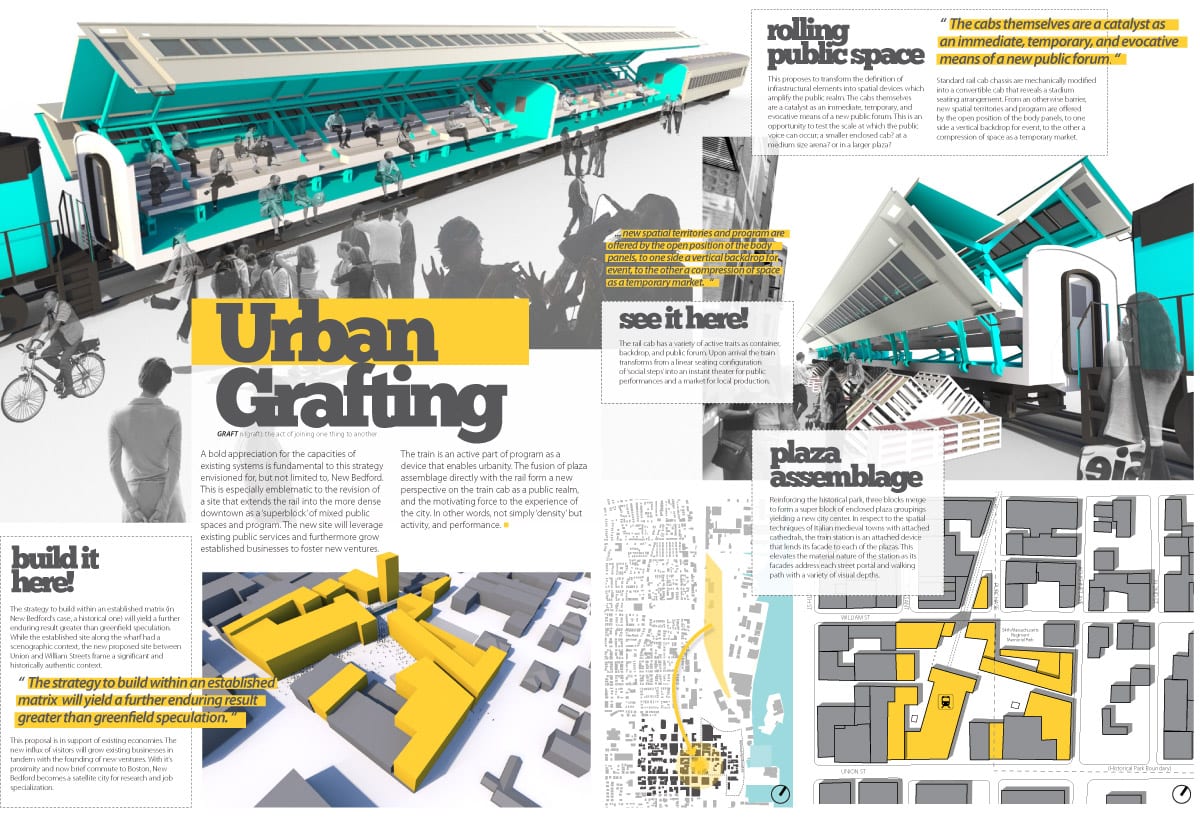by Kim Poliquin

What would make you stop? A glowing greenhouse? A rolling theater? Or how about a super pier? During the summer of 2011 SHIFTboston challenged architects, urban designers, designers and landscape architects — professionals and students — to visualize new destinations along the proposed South Coast Rail extension, a new rail line that will connect Boston to Taunton, New Bedford, and Fall River, Massachusetts.
This international competition generated concepts for a new, vital urban network along the railway, from 5 countries and 7 states. Winning and select submissions from the WHY STOP Competition have become part of the WHY STOP Exhibition at South Station in Boston Massachusetts. The winner and three honorary recipients presented their proposals at the opening of the exhibition on January 19, 2012. Attendees included competition participants and a number of local leaders in architecture, academia and government including competition advisor Edward Mitchell, assistant professor of Yale University, Fred Koetter of Koetter, Kim and Associates and Richard Henderson, Executive Vice President of MassDevelopment.
The opening began with a comprehensive presentation by the competition winner, Emer O’Daly of Dublin, Ireland. Emer’s ‘New Bedford Super Pier’ proposal establishes New Bedford as a regional infrastructural hub for New England. According to juror and former Massachusetts governor, Michael Dukakis “The bold, exciting Super Pier, is a recognition of New Bedford’s historic and continuing connection with the sea and its prominence to this day in the fishing industry. It brings the train into the city where it belongs– and where it can connect directly with the island boat service. Add to this the possibility of major cultural and recreational events, and you really have something that is impressive in its modernity and contrasts nicely with the city’s historic center.”
Following the winner were presentations by three honorable mentions: Marcus Martinez and Ana Ansari of AlloyBuild Somerville, MA presented Urban Grafting; David Yang and Amir Shahrokhi of DnA, New York, NY presented AgroLand; and Chris Aubin of New York, NY presented Sky Lab.
Winner
New Bedford Super Pier
Emer O’Daly, Dublin, Ireland
The New Bedford Super Pier creates a new waterfront center for New Bedford while establishing the city as a regional infrastructural hub for New England. The city of New Bedford sits at the end of the South Coast Rail line. Currently, the PROPOSED train station is positioned north of downtown, which unfortunately will cut it off from the waterfront and the community it will serve. New Bedford Super Pier proposes rotating the station OUTWARD from this location toward the river in the form of a pier, tying into the existing infrastructure and reconnecting the town with the sea.
Honorable Mention
AgroLand
David Yang and Amir Shahrokhi of DnA, New York, NY
Agroland is a reconsidered form of agricultural settlement that seeks to reinforce the cultures of local food production and family farming while reconciling the economies of food production. By analyzing traditional homestead farms and various aspects of industrialized agricultural practices, the project arrives at innovative hybrid models of modular homesteads and small-scale, high-productivity enhanced farming outfits. Agroland will not only serve as a regional market and distribution center, but will export new models of living and food culture, ultimately attracting a diverse constituency of individuals who wish to live work, shop and learn around it.
Honorable Mention
Urban Grafting
Marcus Martinez and Ana Ansari of Alloy Build, Somerville, MA
A bold appreciation for the capacities of existing systems strategically relocates the site to the more dense and historic downtown area as a ‘superblock’. This reinforces established public spaces, businesses and services for new ventures. The fusion of he plaza assemblage directly with the rail form a new perspective on the train cab as the public realm, transforming the rail cabs into a spatial catalyst or spontaneous theatre or marketplace. The compound response delivers a new value through the serial arrival to the city and a kinetic public realm.
Honorable Mention
SKY- LAB
Elihu Rubin, Jacob Dugopolski and Chris Aubin, New York, NY
A bold appreciation for the capacities of existing systems strategically relocates the site to the more dense and historic downtown area as a ‘superblock’. This reinforces established public spaces, businesses and services for new ventures. The fusion of he plaza assemblage directly with the rail form a new perspective on the train cab as the public realm, transforming the rail cabs into a spatial catalyst or spontaneous theatre or marketplace. The compound response delivers a new value through the serial arrival to the city and a kinetic public realm.
Kim Poliquin, a Project Designer at Perkins and Will Architects, is the Director of SHIFTboston and has previously worked at Brian Healy Architects and Cambridge Seven Associates.





































